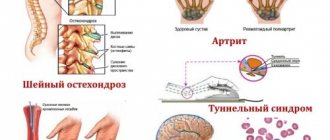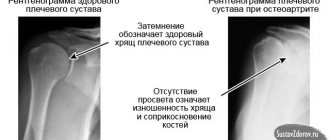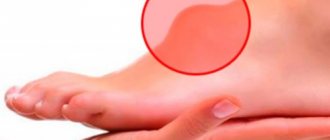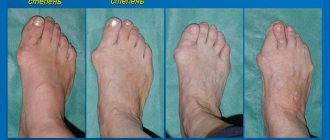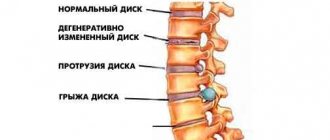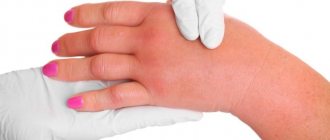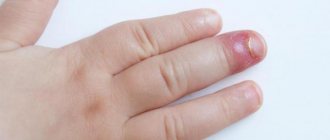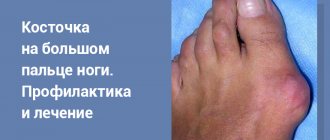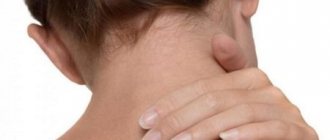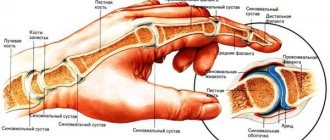With prolonged monotonous load or an uncomfortable position (when the hand is “numb”), this occurs due to a temporary disruption of the blood supply to the limb, as a result of which the conduction of nerve impulses changes. If after a few minutes after changing the position of the body (or rubbing the fingers) the numbness goes away, then this is exactly the indicated case.
With constant numbness in the fingers of the right hand, paresthesia becomes a sign of either a pathology of some part of the nervous system, or neurodegenerative processes, or autoimmune diseases (systemic lupus erythematosus). In this case, you need to seek medical help.
Symptoms of numbness in the fingers of the right hand, as well as the fingertips, as doctors note, in the vast majority of cases occur due to damage to nerve fibers due to osteochondrosis or are a consequence of compression of the nerve trunks due to pathologies of the peripheral nervous system.
Numbness of the little finger and ring finger of the right hand
Numbness of the fingers of the right hand is the most pronounced sign of tunnel neuropathies. The nerve trunks from the spinal cord to the fingertips go along special canals, which narrow in some places between the vertebrae. It is in these places that the nerve is compressed, which leads to the development of so-called tunnel syndromes or peripheral neuropathies, which account for 30% of diseases of the peripheral nervous system.
Thus, numbness of the little finger and numbness of the ring finger of the right hand can be the result of cubital tunnel syndrome (ulnar nerve compression syndrome). The ulnar nerve, which carries nerve impulses to the little finger and half of the ring finger, passes through the cubital canal, located behind the inside of the elbow.
Most often, numbness of the little finger and numbness of the ring finger of the right hand with ulnar nerve neuropathy can be observed when the elbow joint is in a bent state for a long time. That’s why those who work with their elbow resting on a surface (table, machine, etc.) often complain about similar symptoms. In addition, when the elbow joint is overloaded in drivers and musicians, with injuries in athletes, as well as during work associated with vibration, the joint and ligaments thicken. As a result, cubital tunnel syndrome occurs and its symptom appears - numbness of the right little finger and numbness of the ring finger of the right hand, which may be accompanied by pain when pressing on the elbow and weakness in the hand. You cannot let ulnar nerve neuropathy take its course: this can lead to atrophy of the muscles of the hand.
Numbness of the right thumb
Carpal or carpal tunnel syndrome (from the Greek karpos - wrist) causes numbness of the thumb of the right hand, numbness of the index finger of the right hand, numbness of the middle finger of the right hand and half of the ring finger. In this case, the median nerve is compressed as it passes through the carpal tunnel.
This happens from constant tension during prolonged static and dynamic load on one muscle group and on the wrist joint (for example, when working at a computer, as well as among painters, seamstresses, violinists). This syndrome is also called stenotic ligamentosis of the transverse ligaments by narrow specialists: with excessive loads on the hand, the tendons of the wrist joint swell and compress the nerve trunk. It is for this reason that the fingers become numb, and numbness in the fingers of the right hand often occurs at night, and in the morning a person may feel stiffness in finger movements.
Carpal tunnel syndrome can also appear with diseases such as arthrosis, arthritis, neurofibroma, hemangioma, etc. It is necessary to treat this syndrome, since the muscles of the thumb may atrophy, and a person will not be able to bend it.
Numbness of the index finger of the right hand
With dystrophic disorders in the cartilage of the vertebral joints - osteochondrosis - there is a decrease in their elasticity, strength and shape, which leads to pinching of nerve fibers. As a result, patients complain of pain in the neck, shoulder girdle and chest, frequent headaches, fatigue, changes in blood pressure, dizziness and tinnitus, impaired coordination of movements, and “spots” before the eyes. In addition, neurological manifestations of osteochondrosis of the cervical and thoracic spine are numbness of the index finger of the right hand. In this case, very often numbness is felt in the thumb.
Numbness of the index finger of the right hand can be a consequence of pathologies of the elbow joint, primarily such as arthrosis (epicondylosis) and arthritis. With arthrosis, the elbow joint begins to deteriorate and becomes inflamed, which leads to pain radiating to the hand, limited mobility of the arm at the elbow, numbness of the fingers and the inability to clench the hand normally into a fist.
And with arthritis of the right elbow joint, inflammation leads to a deterioration in the conduction of nerve impulses and numbness of the index finger of the right hand. Arthritis can occur as a result of infection, as well as after injury or constant overload of the elbow joint.
Numbness of the middle finger of the right hand
If, with partial loss of sensitivity in the index finger, there is numbness in the middle finger of the right hand, then doctors see the cause of this pathology in functional disorders of the intervertebral discs, cervical discs or cervical muscles. These disorders occur due to a compression effect on the nerve endings, which manifests itself not only in the form of paresthesia, but also weakness of the fingers, as well as pain in the forearm and shoulder.
Numbness of the middle finger of the right hand occurs when the distal processes of the nerve endings of the radial nerve are damaged. That is, it is a peripheral neuropathy that can develop after stretching or tearing a nerve, for example, with subluxation of the elbow joint. But the most common cases involve carpal tunnel syndrome, which was mentioned earlier.
Numbness in the fingers of the right hand most often occurs due to impaired blood supply to the hands and problems with the spine. This symptom is also included in the clinical picture of many diseases that can lead to very serious consequences, such as amputation of a limb or death.
Treatment for numbness in the fingers of the right hand is prescribed based on the diagnostic results. The set of factors causing hypoesthesia can be divided into six main groups:
Injuries; Spine pathologies; Joint inflammation; Circulatory disorders; Nervous system lesions; Diseases of endocrine origin.
Why do my fingers go numb?
Fingers go numb due to:
- Pathologies in the vertebrae;
- Inflammation in the joints;
- Lack of proper oxygen supply to cells;
- Circulatory disorders, pathologies in the circulatory system;
- Receiving physical injuries of open and closed type;
- Endocrine diseases, hormonal disorders;
- Lesions in the area of nerves and vessel walls.
There are many factors for numbness, as well as symptoms. The exact cause can only be discovered by a doctor.
Big
The thumb goes numb due to:
- Development of carpal tunnel syndrome. This problem is caused by a pinched nerve in the wrist. Appears in seamstresses, painters or violinists. It happens to accountants, programmers, secretaries, and all office workers who often have to sit at a computer and use a computer mouse.
- Complications of carpal tunnel syndrome: arthritis, arthrosis, hemangioma, neurofibroma. When the disease occurs, the thumb, middle and index fingers immediately go numb.
- Osteochondrosis or hernia in the spine.
- Hernia or pinched nerve in the cervical spine.
- Previously suffered physical trauma on the right hand.
Pointing
The tip of the index finger or its pad becomes numb as a result of:
- Constant loads on the cervical spine;
- Hernias between vertebrae;
- Development of osteochondrosis or spondylosis, osteophytosis, protrusions;
- Pathologies of the cervical vertebrae;
- Coronary heart disease, the manifestation of which is pain in the heart;
- Blood stagnation in the distal parts of the hand;
- Increase in atherosclerotic plaques;
- Carpal tunnel syndrome;
- Polyneuropathy with damage to the radial nerves;
- Compression of nerves and vascular plexuses;
- Stress.
Average
The middle finger of both hands goes numb due to:
- Osteochondrosis;
- Tunnel syndrome, malfunction of nerve endings;
- Tracking the body in an awkward position;
- Damage to the area of the shoulders, radial bones, hands;
- Malfunction of the central nervous system;
- Rheumatoid arthritis with arthrosis disorders;
- Vascular thrombosis.
The middle finger becomes numb as a result of pathology due to diabetes mellitus, necrosis and developing gangrene. In this case, a characteristic blueness of the skin appears.
Scleroderma
This is a severe autoimmune disease, when the walls of blood vessels, skin, and internal organs gradually become denser, lose their elasticity and stop performing their functions. Scleroderma is a hereditary disease, but relatives of a person with the disease are still more likely to get the disease.
In most cases, the disease develops in middle-aged women - 30-50 years old. Currently, the causes of scleroderma are unknown.
The following signs of scleroderma appear:
- skin thickening occurs, it starts from the fingers;
- there is numbness and tingling in the fingers;
- wrinkles on the face disappear;
- light and dark spots appear on the skin;
- compacted areas shine;
- small pinpoint hemorrhages appear on the skin;
- joints and muscles hurt;
- Raynaud's phenomenon is noted;
- shortness of breath, increasing respiratory failure;
- digestion is disrupted;
- vision deteriorates;
- the person wheezes, it is difficult for him to open his mouth wide.
Scleroderma can be diagnosed visually. But to establish a diagnosis, a biochemical, general blood test, as well as an autoantibody test are prescribed.
If the diagnosis is doubtful, a biopsy is performed on the area of the body that was affected.
https://www.youtube.com/watch?v=tR5kX7hOOK0
Symptomatic therapy is carried out to relieve the main symptoms of the disease.
Anti-inflammatory and phlegm-thinning medications are prescribed, as well as steroids, laxatives, etc. In addition, it is important to adhere to a balanced diet, stop smoking and drinking alcohol. You cannot work in cold conditions; you need to treat all ulcers and skin damage in a timely manner.
Any disease associated with autoimmune processes can provoke numbness in the fingers associated with nerve damage. Therefore, in such cases you need to consult a rheumatologist.
Sometimes discomfort in the fingers causes psychological problems. Therefore, if you have not only this symptom, but also others (sweating, increased heart rate, insomnia, irritation, etc.), you need to contact a specialist. After all, a depressive state requires proper treatment.
Treatment of numbness
Fingers go numb due to reduced immunity, ischemic pathologies, endocrine diseases, malfunctions of the central nervous system, the consequences of which must be eliminated by a specialist.
He will identify the exact causes and may prescribe antispasmodics, anti-inflammatory and decongestant drugs for the treatment of a specific disease. May prescribe ointments, creams and vitamins that improve blood circulation.
To stimulate the proper functioning of the body and fingers, I can advise:
- Less overwork at the computer;
- Regularly carry out general strengthening exercises;
- Observe the rest and work schedule;
- Limit your diet to fruits, vegetables and foods without harmful fats and salts that impede the nutrition of blood cells;
- Quit smoking and drinking alcohol. It harms the whole body.
Numbness of the fingers for physical reasons occurs as a result of hormonal pathologies. To treat and improve blood circulation, the doctor prescribes antispasmodics, anti-inflammatory, decongestant drugs and vitamins.
Vitamin B1 deficiency
A lack of thiamine (vitamin B1) in the body can cause a number of unpleasant symptoms. Beriberi disease may develop due to severe thiamine deficiency. With this disease, the function of the nervous system is impaired. Beriberi in severe form leads to damage to blood vessels and the heart. With a lack of vitamin B1 in the body, the following symptoms are observed:
- the fingers of the limbs on both sides go numb;
- muscle cramps appear;
- muscle atrophy may develop;
- insomnia, memory impairment;
- Wernicke encephalopathy, Korsakoff's syndrome (brain function is disrupted, mental disorders appear);
- weakness in the legs;
- decreased blood pressure, increased heart rate;
- fainting;
- Digestive problems.
In civilized countries, serious cases of beriberi are very rarely recorded. Severe disease is possible in the following cases:
- severe infections;
- sepsis;
- alcoholism;
- surgical interventions on the intestines and stomach;
- hemodialysis.
Sometimes dietary habits can trigger a deficiency of this vitamin. When consuming large amounts of rice, coffee, tea (foods with substances that break down thiamine) and not eating enough meat, grains, legumes (foods containing thiamine), the risk of beriberi increases.
To cure the disease, medications with vitamin B1 are prescribed. It is important to eliminate the factors that provoke the disease and adjust the diet.
Numbness of the nameless
The sensitivity of the hand is reduced due to injury or accidental compression of the elbow joint. The ring finger of the left hand goes numb due to non-compliance with the work regime when constantly sitting at the computer. This leads to compression of the muscles in the wrist area and pinching of the articular nerves.
Dystrophic changes in the hands will cause decreased sensitivity of the fingers. A history of diabetes mellitus, anemia, and vitamin deficiency require timely treatment. The ring finger often goes numb due to osteochondrosis, a disturbance in the blood supply to the body.
If the loss of sensitivity did not occur due to injury to the limb, then the numbness is explained by degenerative disorders in the spine.
Pinching of the intervertebral nerves in the spinal column leads to numbness and pain in the ring finger. The attending physician will determine a medication therapy regimen after diagnosis.
Before treating deep numbness, the doctor must determine the cause of compression of the joints of the left limb using medical diagnostic methods.
After the examination, a treatment tactic is selected: medication, surgery, physiotherapy, you can add folk remedies to the course (with the approval of the attending physician). The patient's body must compensate for the lack of microelements.
People who experience numbness while sitting should try:
- Spend more time in the fresh air;
- Choose a nutritious diet;
- Do physical exercises;
- Do not expose the spine to heavy loads;
- Take regular breaks while working at the computer.
It is useful to attend therapeutic massage courses, a gym, and regularly do physical exercises for your fingers. Ointments and creams help improve nerve conduction of tissues. Timely cessation of smoking and drinking alcohol will speed up recovery, as during the treatment period follow the rules of maintaining a healthy lifestyle.
Anemia
For modern people, anemia is a very common condition. This pathology is manifested by various symptoms, which often make one suspect other diseases. In people with anemia it decreases below normal levels. blood hemoglobin content. In some cases, hemoglobin remains normal, but there is a deficiency of iron in the body. This condition is defined as latent (latent) iron deficiency.
Anemia and iron deficiency are manifested by the following symptoms:
- fingers and toes go numb;
- weakness, pallor of the skin and mucous membranes;
- the appearance of aversion to meat and the desire to eat inedible food;
- subfebrile temperature is maintained for a long period;
- the condition of hair and nails worsens;
- Itchy skin bothers me.
According to the standards, hemoglobin in a healthy man from 20 to 60 years old should be from 137 g/l or more. In women, hemoglobin should not be lower than 122 g/l.
To determine whether a person suffers from iron deficiency, a laboratory test determines the level of ferritin in the blood.
If anemia has been diagnosed, it is necessary to take iron supplements to help replenish the body's reserves of this metal. These medications are Sorbifer Durules, Ferretab.
Little finger and ring finger
A numb ring finger often signals overstrain of the muscles of the limbs. If the little finger goes numb at the same time, the cause is considered to be heart failure.
The nerve endings of these fingers of the left hand become numb due to pinching of the vertebrae or intervertebral joints of the upper spine.
The causes of numbness in the little finger and ring finger of the left hand will be the following types of diseases:
- Bulging of the intervertebral disc into the canal of the spinal column, which is explained by the transitional stage of osteochondrosis, which is replaced by an intervertebral hernia;
- Cardiac diseases, including heart failure and acute stage of coronary syndrome;
- Rotation of the cervical and lumbar vertebrae, leading to pinched nerves of the limbs.
Treatment is prescribed after the study, so the doctor prescribes diagnostic methods to the patient:
- Electrocardiography;
- X-ray analysis;
- Magnetic resonance imaging of the cervical spine.
Common treatment methods are physical therapy and magnetotherapy. The effect of these techniques on the patient’s body is regarded by doctors as positive, allowing them to cope with various problems.
A treatment method based on magnetic therapy reduces pain in the joints, reduces inflammation, stimulates blood flow, and reduces swelling.
Effect of alcohol
People who abuse alcohol, in addition to a number of other disorders, experience neuropathy - nerve damage. This condition is defined by a special term - alcoholic neuropathy.
Once in the body, ethanol disrupts the absorption of proteins, folates, and thiamine. In addition, ethanol derivatives contribute to the destruction of nerve cells. Disturbances in the liver may also occur, affecting neuromuscular transmission. This is why alcohol lovers often have numb fingers.
Paresthesia of the fingertips
Paresthesia, which is explained by pathologies arising from circulatory disorders, cannot be ignored.
Swelling, tingling, and pain are unpleasant symptoms that accompany numbness. Possible causes of numbness:
- Pinched nerves of the limbs;
- Wrist compression;
- Pre-stroke condition;
- Intervertebral hernia;
- Joint inflammation;
- Multiple sclerosis.
Common causes of numbness in the fingertips are thrombosis, rheumatism, and Raynaud's disease. An effective way to eliminate loss of sensitivity is heat therapy.
Before prescribing a treatment method, the doctor determines its appropriateness. The technique involves applying ozokerite or paraffin-based compresses to the patient’s spine.
If during heat therapy the diseased area is heated, then electrophoresis eliminates inflammatory processes by penetrating the drug under the skin deep into the epidermis layer. Both methods normalize blood circulation, relieve swelling, spasms, pain, accelerating the healing process.
Diphtheria polyneuropathy
Diphtheria is rare in the modern world, as vaccination against this disease is widespread. Therefore, the disease affects those who have not been vaccinated, or if the vaccination was not given in a timely manner.
The disease begins with symptoms reminiscent of ARVI. Gradually, the pain in the throat becomes more and more severe, the so-called diphtheria film appears, the lymph nodes become enlarged, and breathing becomes difficult.
Diphtheria can affect the nerves, leading to sensory loss, tingling and numbness in the limbs.
For treatment, a special anti-diphtheria serum is used.
Wellness exercises, massage
In combination with the main treatment of a disease that causes numbness in the fingers, the use of additional therapeutic methods is effective:
- Massage;
- Gymnastics.
Massage is an effective method used in medicine to treat numbness of the upper extremities. An appropriate massage is prescribed only after a final diagnosis has been made.
The selection of specific massage exercises, the technique of their implementation, frequency and duration depend on the underlying disease that caused the numbness.
It is dangerous to independently select massage techniques without consulting a specialist; sometimes they can have an aggravating effect on your health.
The main effect of massage is aimed at achieving the following effects:
- Normalization of the functioning of the vascular system, capillaries, veins;
- Elimination of muscle spasms;
- Relieving nervous tension.
Massage oils are designed to enhance the effect of the procedure. Adding a few drops of essential and camphor oils to them increases blood circulation. The arteries will be more elastic, metabolism will be activated, and the tissues will be filled with oxygen.
Massage technique:
- The patient takes a comfortable position, lying or sitting on a chair.
- Massaging movements are carried out simultaneously with two hands or one, while supporting the massaged limb with the other hand.
- The lines of movements are directed along the lymph flow to the lymph nodes.
- The procedure ends with stroking, grasping movements.
If the fingers of the upper extremities are numb, the hands are completely massaged. To do this, carry out the following movements:
- Kneading. The fingers pinch, move towards each other, stretch the skin, press on the bones.
- Vibrating. Apply acupressure to the entire hand, pound, shake the hand and fingers separately.
- Rubbing. Draw straight, circular, arcuate lines. Carry out hatching and sawing movements.
- Stroking.
Each finger is massaged separately in the direction from the tip to its base. In this case, all its sides are affected: lateral, dorsal and palmar. The procedure begins and ends in the same way – with stroking.
You can quickly relieve the symptoms of numbness localized on the fingers of the upper extremities, free them from muscle spasm, activate normal blood circulation and restore their full sensitivity by performing a set of rotational exercises:
- Hands are extended forward, clenched into a fist. Bend your arms at the elbow and rotate them towards your chest. Perform 20 times for each hand, or both at once.
- Repeat an exercise similar to the previous one, changing the direction of rotation away from the chest. The hands can be straightened.
- The hands are fastened into a lock. Without releasing your fingers from it, twist them in all 4 directions.
- With outstretched arms, bend all your fingers one at a time, turning your hand towards you. Perform the opposite exercise: extend all fingers one at a time, gradually turning your hand away from you. Repeat 30 times. Can be performed simultaneously for both limbs.
- The palms are folded, touching each other, and placed in front of the chest. You need to create resistance by pressing with force and holding for 20 seconds. Relax.
- The arms are clasped together and placed in a horizontal position in front of the chest. At the same time try to open them and create resistance to this. Unlock your fingers after performing 20 times, relax them, shake them, lower them.
- Clench your fist as hard as you can for 10 seconds. Unclench, slowly spreading your fingers to the sides. Repeat the exercise 10 times. At the end of the exercise, you can relax your fingers by massaging them.
Charging is safe, does not have the possibility of developing complications and can be used without a doctor’s prescription.
To prevent the onset of numbness or reduce the degree of symptoms when it occurs, a set of gymnastic exercises has been developed.
They relieve tension, relax stiff muscles, and increase blood flow. They will only take a few minutes to complete.
All exercises are performed in the starting position while sitting:
- Raise your straight arms vertically up, shake your hands, relieving tension from them for half a minute. Smoothly lower along the body.
- Place your hands along the body, at the seams. Perform shaking movements with your hands for one minute.
- Place your arms forward and cross them diagonally. Press your fingers tightly together. Make pulling, resisting movements: reaching for your fingers and at the same time resisting it: as if someone is pulling them in the other direction. Maximum muscle tension is created in the elbow area. Hold for 10 seconds, relax.
- Put your hands forward, place them diagonally relative to each other. Bend your hands upward with your fingers. Push away a mentally imagined obstacle, try to move it apart for 10 seconds. Relax your muscles.
It is useful to do gymnastic exercises to relax your fingers and prevent numbness as often as possible, especially when you feel tension that constrains the muscles of your hands.
A special mini set of exercises for your hands will help you relax them on the road or at work:
- Clench your hands tightly into fists. Perform versatile rotations with them.
- Place the palm of your hand on the table. Raise your fingers up, first one at a time, then together.
- The fingertips of the right hand touch the fingertips of the left hand. Lightly press them against each other, creating resistance.
- Slowly protrude your thumb away from the entire palm and smoothly return it back.
- Tighten your palm. Slowly bend each finger up one at a time.
- Throw a small ball and catch it with your hand.
Medicines, traditional medicine
Medicines used for loss of sensitivity in the fingers of the upper extremities are divided into groups depending on the direction of their action.
For diseases resulting from damage to the nervous system, medications are used:
- Nurofen;
- Ketonal;
- Ketorol;
- Diclovit;
- Mydocalm injections;
- Neuromultivitis vitamins;
- Milgamma injection.
For disorders of the vascular system, the following medications are indicated:
- Vasodilators, Corinfar, Cordafen, Nifedipine;
- Enriching the blood with oxygen, Trental, Vazonit, Trenpental;
- Dilatation arteries, Norvasc, Amlodipine.
To relieve the symptoms of numbness and treatment, ointments are prescribed:
- Fastum gel;
- Diclofenac;
- Voltaren.
Medicines are prescribed by a doctor based on the diagnosis. The use of drugs is not recommended without prior approval from the attending physician.
Traditional medicine will help reduce the incidence of numbness and improve the general condition of the fingers if they lose sensitivity:
- Ingestion of garlic infusion. Fill 1/3 of a half-liter jar with chopped slices and fill with vodka to the very top. Cover with a lid and place in a dark place. Leave for 2 weeks. Take 5 drops diluted in 1 teaspoon of water, 3 times a day before meals. The course of treatment is one and a half months.
- Rub a mixture of black pepper into the skin of your hands. Grind the peppercorns into powder (until you get 100 grams). Pour into a saucepan and add one liter of vegetable oil. Bring to a boil, simmer for half an hour over low heat. Stir occasionally. Rub into the skin while warm 2-3 times a day.
- Wearing a natural red wool thread on the wrist.
- Taking hot baths. Dip your fingers into the water, pressing the tips onto the bottom of the bowl. Alternate hands.
- Rubbing your fingers with a mixture of barrel pickles and fresh hot red pepper. Cut 3 peppers and 3 cucumbers. Place in a jar, pour 0.5 liters. Vodka. Keep for 3 days in a dark place. Use when rubbing your fingers.
Traditional medicine improves the symptoms of numbness, but their use should be in combination with procedures and medications prescribed for the treatment of the underlying disease.
Thrombosis
Unlike thrombosis of the lower extremities, which are characterized by obvious signs such as swelling and pain, subclavian vein thrombosis has virtually no symptoms in the early stages and appears after the formation of a blood clot. However, thrombosis of the upper extremities is much less dangerous and easier to treat.
Why do the tips of my fingers go numb due to thrombosis? The reason for this condition lies in the blockage of an artery by a blood clot, when blood circulation is disrupted and the cellular structures do not receive sufficient nutrition and oxygen. It is this process that causes the gradual and irreversible destruction and death of tissue, called necrosis.
In addition to neurological, there are other signs by which developing thrombosis can be determined:
- severe swelling in the hand;
- visible pattern of superficial veins;
- pain syndrome of a pulsating nature.
The most important diagnostic criterion is the occurrence of these symptoms after significant physical activity, which simplifies diagnosis and allows one to assume thrombosis during the examination and interview of the patient.
Complex treatment of thrombophlebitis of the upper extremities is in the vast majority of cases conservative, and does not always require bed rest. However, it is better to keep your hand in an elevated position, for which it is recommended to wear a special compression sleeve.
To restore impaired blood flow, the following are used:
- heparin-based drugs with anticoagulant action;
- venotonics – Rutin and its derivatives;
- non-steroidal anti-inflammatory drugs in tablets and ointments - Diclofenac, Ketoprofen, Troxevasin and Troxerutin ointments, Lyoton gel;
- sulfonamide drugs - Metronidazole, Gentamicin, etc.
Heparin and drugs based on it are the drugs of choice for thrombosis
Surgical treatment is carried out in case of an immediate threat of necrosis and severe impairment of venous and arterial circulation. During the operation, the blood clot and affected tissue are removed. In extreme, especially severe cases, amputation of part of the limb may be required.
